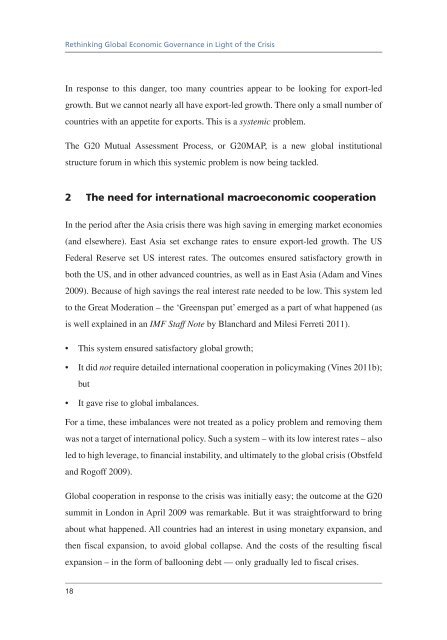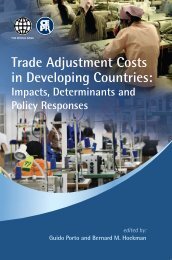Download PDF - Vox
Download PDF - Vox
Download PDF - Vox
- No tags were found...
You also want an ePaper? Increase the reach of your titles
YUMPU automatically turns print PDFs into web optimized ePapers that Google loves.
Rethinking Global Economic Governance in Light of the CrisisIn response to this danger, too many countries appear to be looking for export-ledgrowth. But we cannot nearly all have export-led growth. There only a small number ofcountries with an appetite for exports. This is a systemic problem.The G20 Mutual Assessment Process, or G20MAP, is a new global institutionalstructure forum in which this systemic problem is now being tackled.2 The need for international macroeconomic cooperationIn the period after the Asia crisis there was high saving in emerging market economies(and elsewhere). East Asia set exchange rates to ensure export-led growth. The USFederal Reserve set US interest rates. The outcomes ensured satisfactory growth inboth the US, and in other advanced countries, as well as in East Asia (Adam and Vines2009). Because of high savings the real interest rate needed to be low. This system ledto the Great Moderation – the ‘Greenspan put’ emerged as a part of what happened (asis well explained in an IMF Staff Note by Blanchard and Milesi Ferreti 2011).• This system ensured satisfactory global growth;• It did not require detailed international cooperation in policymaking (Vines 2011b);but• It gave rise to global imbalances.For a time, these imbalances were not treated as a policy problem and removing themwas not a target of international policy. Such a system – with its low interest rates – alsoled to high leverage, to financial instability, and ultimately to the global crisis (Obstfeldand Rogoff 2009).Global cooperation in response to the crisis was initially easy; the outcome at the G20summit in London in April 2009 was remarkable. But it was straightforward to bringabout what happened. All countries had an interest in using monetary expansion, andthen fiscal expansion, to avoid global collapse. And the costs of the resulting fiscalexpansion – in the form of ballooning debt –– only gradually led to fiscal crises.18














